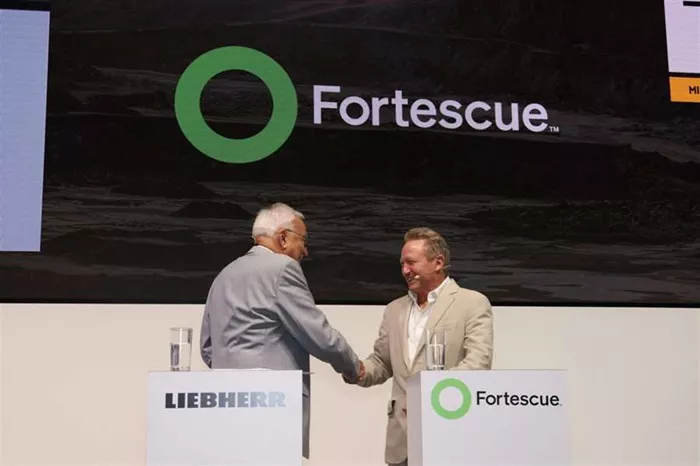In a groundbreaking move toward sustainable mining, Fortescue Metals Group has partnered with Liebherr, a leading machine and power specialist, to develop zero-emission mining solutions in a deal valued at $2.8 billion (£2.1 billion). This significant agreement follows a series of successful collaborative projects, including the development of an autonomous haulage solution and the testing of a hydrogen-powered Liebherr T 264 haul truck at the Christmas Creek mine in Australia.
The partnership is focused on creating an advanced fleet of mining machinery aimed at reducing carbon emissions. As part of this initiative, Liebherr will supply 475 zero-emission machines to Fortescue, which will consist of approximately 360 autonomous battery-electric trucks, 55 electric excavators, and 60 battery-powered dozers. This substantial addition represents about two-thirds of Fortescue’s current mining fleet, marking a significant step toward establishing one of the largest zero-emission mining fleets globally.
Unlike many industry players exploring hydrogen fuel cell technology, Fortescue has opted for a fully battery-electric solution across its machinery models. This decision aligns with the company’s vision to create a comprehensive autonomous battery-electric haulage system tailored for large-scale mining operations. Furthermore, there are plans to offer this innovative zero-emission mining ecosystem to other companies in the industry in the near future.
Some of the Liebherr machines will incorporate battery systems developed by Fortescue Zero, featuring the company’s flagship mining dozer, the PR 776. This agreement is heralded as the largest in Liebherr’s 75-year history and is expected to see the new zero-emission mining ecosystem fully operational by 2030, heralding a new era of sustainable practices in the mining sector.
Related topics:
- EMR Launches Pioneering EV Battery Recycling Plant in Birmingham
- Cambustion Unveils Advanced Particulate Filter Testing System for Heavy-Duty Engines
- IMO Committee to Tackle Maritime Emissions and Pollution in the Arctic

